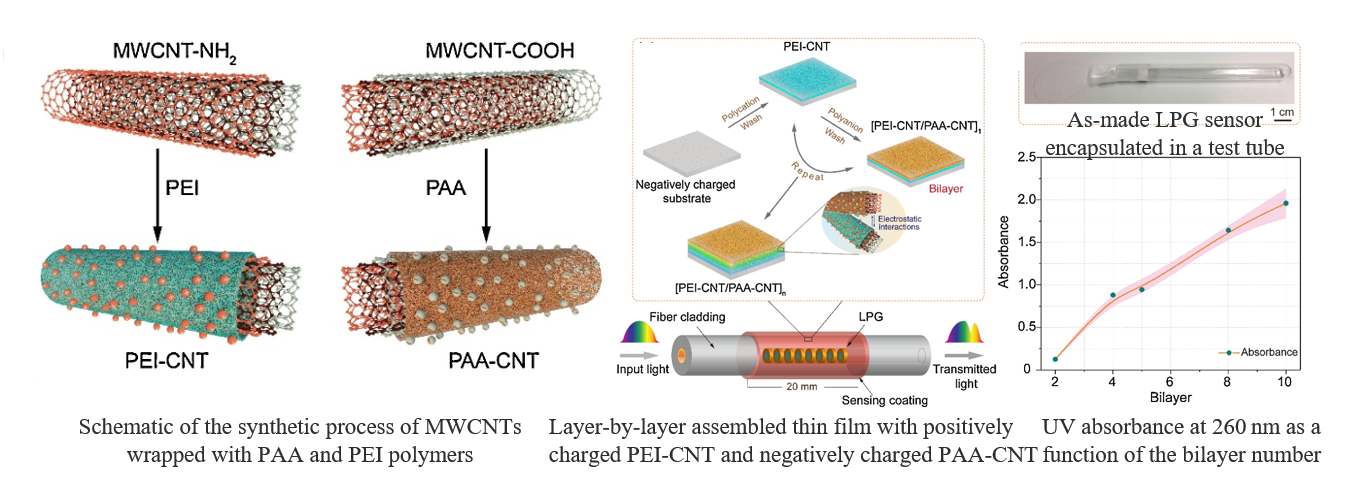Layer-by-layer assembly of polyelectrolytes-wrapped multi-walled carbon nanotubes on long period fiber grating sensors
Highlight
•A new long period fiber grating (LPG) sensor coated with polyelectrolytes-wrapped multi-walled carbon nanotube (MWCNT) (PE-CNT) thin film was presented.
•The LBL assembly technique is successfully exploited to deposit MWCNT thin film on a LPG sensor.
•The wrapping of polyelectrolyte molecules on MWCNT surfaces leads to enhanced performance of a LPG sensor in both sensitivity and durability.
•The LPG with (PE-CNT)10 thin film results in a sensor with fast response to variations of the external refractive index and pH.
A new type of long period fiber grating (LPG) sensor coated with polyelectrolytes-wrapped multi-walled carbon nanotube (MWCNT) (PE-CNT) thin film is reported in this study. The novel nanostructured thin film is deposited on the LPG grating region using a layer-by-layer assembly technique. The aim of using polyelectrolytes (PE) including poly(ethylenimine) (PEI) and poly(acrylic acid) (PAA) in the coating layer is to improve the dispersion of MWCNTs and to enhance the adhesion of functionalized MWCNTs on the LPG surface. The structures and morphologies of the MWCNT-based nanostructured thin film are observed by scanning electron microscopy characterization. The refractive index and pH sensing behaviors of LPGs with pure (PE)10 thin film and with (PE-CNT)10 thin film, respectively are compared. Results show that for LPG with (PE-CNT)10 thin film the transmission intensity at the resonance wavelength decreases noticeably with the increase of the surrounding refractive index. This is distinct from the sensing mechanism of LPG with (PE)10 thin film, which is based on the resonance wavelength shift. The LPG with a (PE-CNT)10 thin film provides enhanced pH sensitivity compared with that of a (PE)10 thin film. The LPG with (PE-CNT)10 thin film has a fast response rate and a good repeatability, thus demonstrating its strong potentiality for practical monitoring applications.





